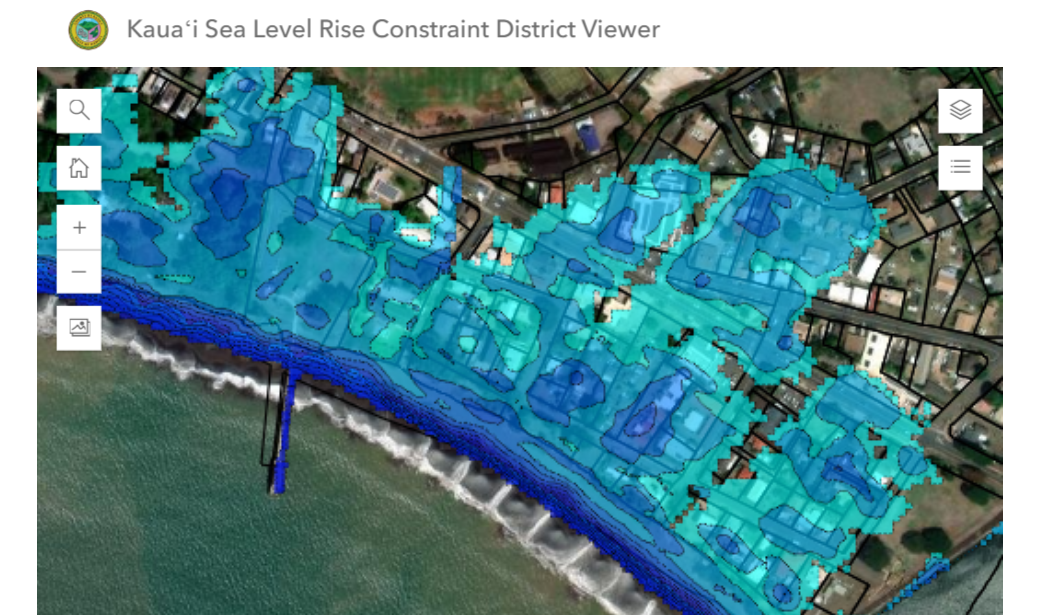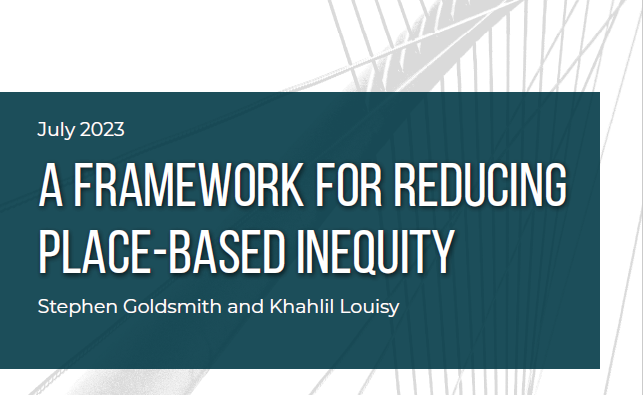- November 28, 2022
- Data visualization
Complementing Harvard’s Map of the Month series, Map Monday highlights a data visualization that enhances understanding of or helps resolve a critical civic issue.
Fairfax is a small town just north of San Francisco that stretches a mere 2.23 square miles. Positioned in the mountains of Northern California, Fairfax has a hilly topography and is at high risk of wildfires. With 7,600 residents living in 3,200 housing units in such a small and complex geographic footprint, it is understandably challenging to find room for more units – yet the Association of Bay Area Government’s (ABAG’s) 2023 RHNA Plan requires that Fairfax plan for 490 new housing units by 2031.
In 1969 the state of California mandated that all cities and counties across the state “adequately plan to meet the housing needs of everyone in the community.” As part of this mandate, the California Department of Housing and Community Development (HCD) works with regional Council of Governments (COGs) across the state to determine each region’s housing needs based on demographic trends and other projected growth factors. These evaluations are known as Regional Housing Needs Assessments (RHNA).
Through the RHNA process, HCD determines each region’s housing allocation (or number of new units that must be planned for over the next 8 years) and the COGs are responsible for allocating a certain number of housing units to each city and town in that region. The COGs will then submit their RHNA Plans to HCD outlining how their region intends to comply with the allocation. Local jurisdictions have access to state funding sources for technical assistance to help cover the costs of planning activities involved in complying with the RHNA allocation.
The state is currently amid its sixth housing element update cycle. Given the state of California’s housing crisis, state lawmakers have taken drastic steps in the last five years to accelerate housing development.
In planning for so many new housing units, Fairfax Mayor Stephanie Hellman and the rest of the town’s staff need to balance the needs of various stakeholders, including residents, business owners, and the state government. “490 new units would be a big change for a town our size,” said Mayor Hellman, “Residents are understandably concerned about the impact this will have.” From concerns over wildfire evacuation, to parking access and traffic congestion, to maintaining the aesthetic of the town, some residents have expressed deep concerns about the town’s mandated housing obligations.
Understanding that the housing element update process can be a sensitive issue for Californian’s, ABAG purchased licenses for a map-based simulation tool that all local governments in their jurisdiction could use to engage with residents in an interactive way. With the simulation tool, Fairfax residents were able to identify parcels across town where new housing could be built and were tasked with allocating 490 housing units across the town, giving them firsthand experience of what it is like to be a town planner. The tool even allowed them to submit their proposals to the town’s leadership for consideration in the housing element update. The software would not let a resident submit their suggestions until their housing plan was compliant with the RHNA allocation.

Typically, it can be very difficult for people to visualize where new housing will go and to grasp the challenges faced by town planners. “Residents often have little understanding of what goes into these decisions,” said Mayor Hellman. She went on to explain that the simulation tool was incredibly successful in exposing residents to the housing plan update process in a way that was never possible before, which helped residents gain a greater understanding of the town’s obligations and to empathize with the town leadership and planning staff.
For Mayor Hellman, the real value in the tool came from the feedback residents provided in terms of where they think housing should and should not go. “The feedback from residents was extremely helpful to our staff in helping us understand what the community deemed acceptable or was absolutely out of the question for them,” said Mayor Hellman. “Hearing their thoughts was really important in helping us determine where we would plan for new housing to be built.”
The benefits of gamifying public engagement
To encourage residents to use the simulation tool, including those that have historically never been engaged in town affairs, the Mayor’s staff advertised through multiple communication platforms. These included all the town’s public email channels, the town website, the housing plan update website (Fairfaxspeaks.com), and social media platforms like Next Door. The town planning staff also held several workshops and training sessions with residents to provide user demonstrations.
After all the public input sessions, dozens of town residents spent a more than 100 hours using the simulation tool. The town also received hundreds of public comments and suggestions in support of the planning activities. Residents also noted that the tool was helpful in making their voice heard. Mayor Hellman felt that this was a huge win for the town’s efforts to get residents more involved. “The simulation tool was a game changer for us in terms of inviting residents to participate in the process in an entirely new way,” she continued, “By using the simulation tool, our planning staff made public engagement more accessible, and dare I say fun, for residents to participate.”
Additionally, it helped her planning team reach out to disengaged residents, build awareness about the housing plan update, and educate residents about the process while also empowering them to be a part of improving their community. “In previous update cycles, the only way residents could get involved was to show up at town meetings, which is hard for families and residents that are leading busy lives,” she said. “The simulation tool gave residents a more accessible way to be involved and it allowed us to be more transparent, which helped to build trust in the process.”
When asked to give advice to other local leaders looking to replicate her planning team’s work, Mayor Hellman encouraged others to embrace new digital tools that make it easy for residents to immerse themselves in the process. She explained that people want to be involved in their community, but the old ways of engaging with the government are just not accessible; “Residents want access to digital tools to make their voices heard and there is a plethora of low-cost, easy-to-use platforms that we can adopt for them. In today’s age, we must do this if we want to truly engage with constituents.”





